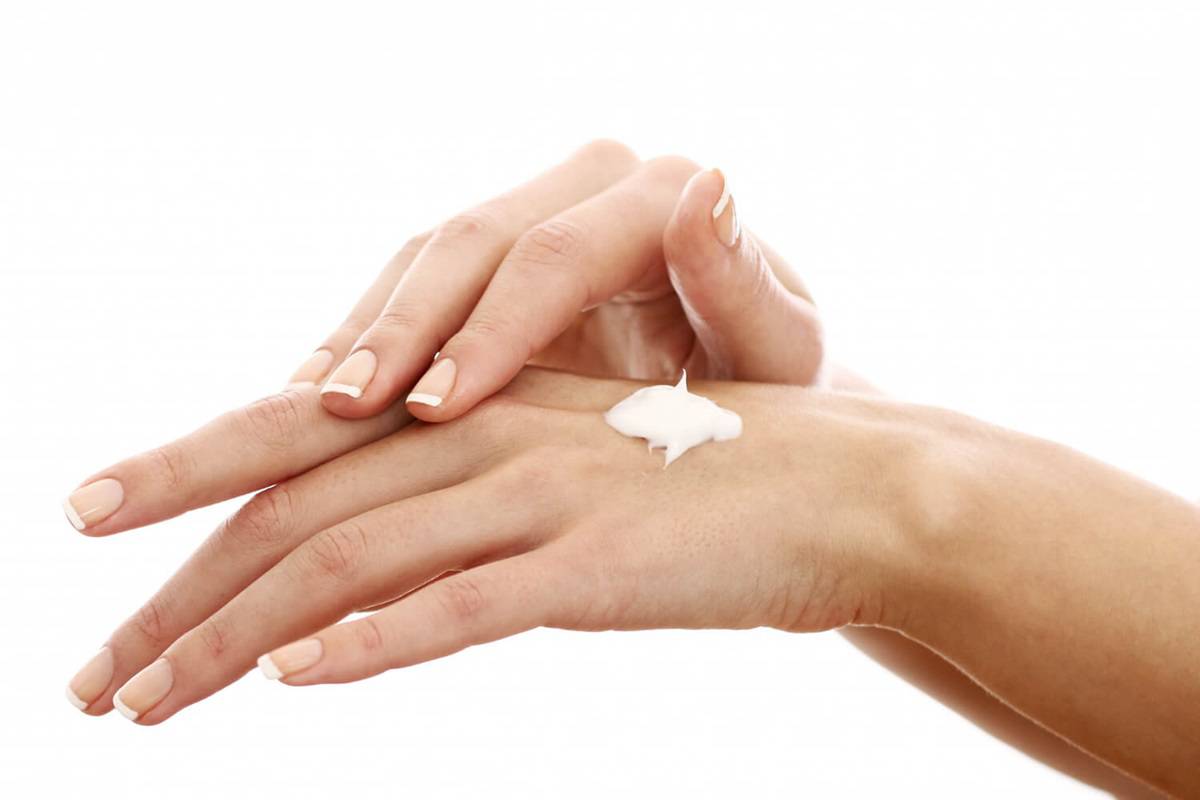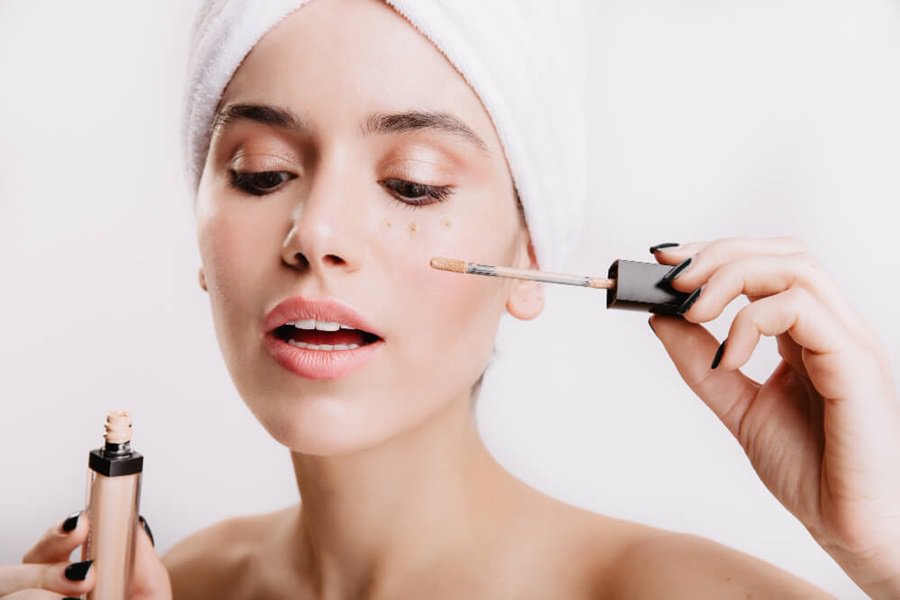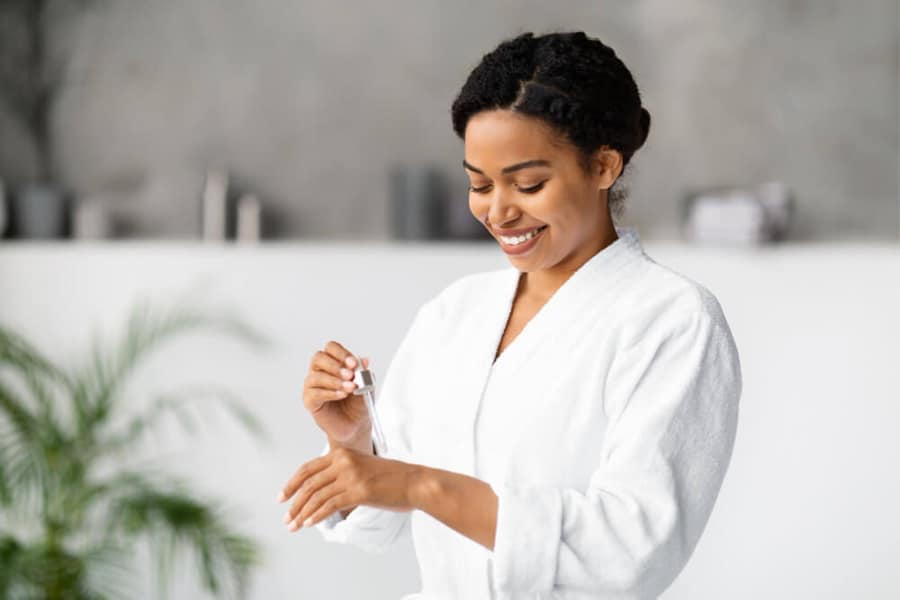Primer or Moisturiser First: Choosing The Right Makeup For Skin Care
3rd April, 2024

Primer and moisturiser are staples of skincare prior to adding makeup. But which should be used first? Find out now.
In the world of makeup and skincare, the order of application can make a significant difference. One common question is primer or moisturiser first? In this article, you will find the answer to this question, to apply moisturiser or primer first, and where sunscreen fits into your routine. Understanding the sequence—whether you put moisturiser on before primer and why—can improve the quality of your skin health and makeup’s longevity.
Is Primer the Same as Moisturiser?
Primer and moisturiser are often mentioned in the same light, leading to confusion about whether they are the same or which comes first. It’s crucial to understand that primer and moisturiser serve different purposes. Primers are designed to create a smooth base for makeup application, therefore improving the longevity and appearance of makeup on the skin. They might contain ingredients that address specific makeup concerns like oil control or radiance but are not primarily hydrating.
The Role of Moisturising Primers
With moisturising primers, these products provide a hydration boost and prepare the skin for makeup, especially beneficial for those with dry skin. However, they should not replace your daily moisturiser. Think of them as a bridge between skincare and makeup, offering extra moisture while setting the stage for your foundation.
What Are Moisturisers
Moisturisers are fundamentally designed to hydrate and nourish the skin. Available in various formulas, they cater to different skin types and concerns, from oily to dry and sensitive skin. Moisturisers work by locking in water content, supporting the skin’s barrier, and providing essential nutrients.
When To Use Moisturisers
When incorporating moisturiser into your skincare routine, timing is everything. It should be applied after cleansing and any serums, but before sunscreen and primer. This sequence ensures that your skin receives the full benefits of hydration and protection. Remember, the rule of thumb is to layer from thinnest to thickest texture, ending with sunscreen for daytime protection.
What Is A Primer for Makeup
Primer is a crucial product to be used in your makeup kit, acting as a preparatory layer that sets the stage for a flawless makeup application. It will ensure that your look stays fresh and lasts longer. Primers can vary in texture and effect, from mattifying formulas that control shine to hydrating options that boost the skin’s moisture levels.
Primers not only smooth out the skin’s surface but can also offer additional benefits like blurring pores, reducing fine lines, and creating an even skin tone. Some primers contain light-reflecting particles that impart a subtle glow, setting a radiant base for the foundation. The goal is to provide a seamless canvas that improves the adherence and longevity of subsequent makeup layers that you may add.
When To Apply Primer

So, when do you apply primer? After your skin has been cleansed, treated with serum, and moisturised, primer should be the next step—right before you start your makeup application. This ensures that the primer can work effectively to advance the makeup’s performance and durability. Whether you’re aiming for a matte finish or a dewy look, choosing the right primer can make all the difference in your makeup routine, reinforcing the idea of adding moisturiser or primer first.
Benefits of Using a Primer
The versatility of a primer makes it the perfect tool to use for improving skin quality and appearance. Still unconvinced of the benefits? Learn more below:
- Smooth Canvas Creation: Fills in fine lines, pores, and uneven textures. This ensures that the makeup glides on effortlessly and stays in place.
- Radiance Enhancement: Cruelty-free, vegan primers contain light-reflecting particles for a subtle glow. This also gives the skin a luminous base, giving the sense of youthfulness.
- Skin Concerns Addressed: Colour-correcting primers neutralise redness and discoloration, allowing for lighter foundation coverage and natural finish.
- Hydration and Nourishment: Primers lock in moisture, preventing makeup from looking flaky. This is also beneficial for dry skin, maintaining hydration under makeup.
- Environmental Protection: Primers contain SPF and pollution defence, therefore protecting the wearer against UV rays and pollutants, preventing premature ageing.
- Extended Makeup Wear: As mentioned, primers also form a barrier to prevent oil breakdown of makeup, thereby reducing touch-ups, and maintaining makeup freshness longer.
We have further articles that delve into the intricacies of beauty makeup that can be accessed on our blog, including the differences between beauty marks and moles.
Which Primer or Moisturiser Is Right for You
To find the best moisturiser, you must first assess your skin type. Those with oily skin should opt for lightweight, non-greasy moisturisers that provide hydration without adding excess oil, often labelled as oil-free or mattifying. For those with dry skin, a more nourishing moisturiser that delivers intense hydration and helps to repair the skin barrier is essential. Combination skin benefits from a balanced moisturiser that can address both oily and dry areas without causing irritation.
When it comes to primer selection, the key is to complement your skin type and concerns. Oily skin types should look for primers that minimise pores and control shine, while dry skin will benefit from primers that offer hydrating properties to smooth out dry patches and fine lines. For those with combination skin, a primer that balances and maintains a consistent texture across the face is ideal.
Primer or Moisturiser First
The sequence in which you apply moisturiser and primer is important towards their overall performance. Moisturiser goes first because it hydrates the skin and creates a healthy base for the primer and makeup. Applying moisturiser before primer allows the skin to absorb essential nutrients and hydration, preventing makeup from looking patchy or cakey. It’s not just about hydration; it also ensures that the primer can provide a smooth canvas for makeup application.
After moisturising, waiting a few minutes before applying primer is recommended to allow the moisturiser to fully absorb into the skin. This wait ensures that the primer can effectively adhere to the skin, creating a more durable base for makeup.
Primer comes next, laying the groundwork for a smooth makeup application, helping to even out skin tone, and ensuring the longevity of the makeup.
How Long To Wait Between Moisturiser or Primer Application
Combining the right moisturiser and primer together can improve the skin’s texture and appearance, providing a flawless base for makeup. Moisturiser ensures the skin is adequately hydrated, while primer helps to smooth out any imperfections and extend the wear of makeup. Together, they lock in hydration, improve makeup application, and maintain a fresh look for longer periods.
For the best results, you should wait for a couple of minutes (between 1-5 mins in total) before adding the primer. In-between this time allows the moisturiser to be fully absorbed into the skin so that the primer can then be added onto a smooth skin base that is properly hydrated.
How To Apply Primer

- Add Moisturiser
Applying moisturiser before primer ensures that your skin is well-hydrated and plump, creating the perfect canvas for makeup. After cleansing and toning, evenly apply a moisturiser suited to your skin type, allowing it to absorb fully and hydrate the skin deeply. Try our soothing oil free moisturiser lotion for an effortless application that feels pleasant on the skin.
- Apply Primer
Once your skin is moisturised, it’s time for the primer. The primer should be applied evenly across the face to smooth out fine lines, pores, and imperfections, creating a seamless base for your makeup. Using your fingertips, apply a small amount of primer, starting from the centre of your face and blending outward. The warmth of your fingers helps to distribute the product evenly, ensuring coverage is thin and consistent.
For this process, we recommend this Mehron velvet finish primer, made using cruelty-free, vegan materials, so that it can be used for any and all skin types.
- Seamless Foundation Application
After the primer sets (usually a minute or two), proceed with your foundation. The primer will have created a smooth surface that allows the foundation to glide on effortlessly and stay put throughout the day. For those preferring a natural look, primer can be worn alone to subtly improve the complexion, providing a soft-focus effect and minimising the appearance of imperfections such as pores and fine lines.
Know When To Apply Primer Before or After Moisturiser
In conclusion, understanding the distinct roles of moisturiser and primer in your beauty regimen is crucial. Always apply moisturiser first to hydrate and prepare the skin, followed by primer to create a smooth base for makeup application. This sequence will increase the longevity, appearance, and performance of your makeup, as well as improving skin health. By selecting products suited to your skin type and using them in the correct order, you can achieve a flawless, long-lasting makeup look that showcases your natural beauty.
Take further inspiration with these 10 celebrities with perfect skin.
FAQs
What goes first, primer or moisturiser?
How long should you let primer dry before foundation?
Do you really need a primer?
Should you use primer before foundation?
Sources
Valenti, L., (2015) What’s THAT Like? 10 Celebrities with the World’s Most Perfect Skin. Marie Claire. [online] Available at: https://www.marieclaire.com/beauty/news/g2610/celebrities-with-amazing-skin/ [accessed 15/03/24]
Hey there! I’m Isabelle Kerrington, and I’m thrilled to share my passion for the performing arts through my blog. Focusing on theatre makeup, my posts will cover everything from product recommendations to helpful tips and engaging tutorials. Join me on this exciting journey as we explore the magical world of theatre makeup together.
Leave a Reply